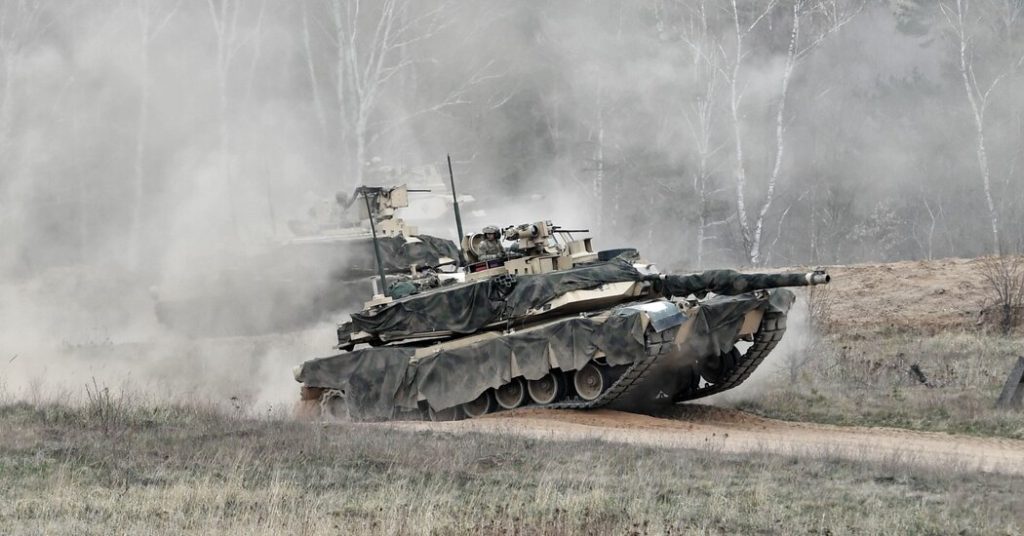The deployment of drones in combat in Ukraine is transforming modern warfare and has started to have a significant impact on one of the most powerful symbols of American military strength – the tank. Russian forces have successfully taken out several American-made M1 Abrams tanks that were sent to Ukraine, along with numerous other tanks from various manufacturers. The use of drones to target tanks is being viewed as a new way in which the nature of warfare is evolving, showcasing a highly accurate and low-cost approach to tank killing.
Drones known as first-person view drones (FPVs) are being used to target tanks in their most vulnerable spots, such as the top, rear engine block, and weak points between the hull and the turret. These drones equipped with cameras allow for real-time streaming of images back to their controllers who can direct them to hit tanks precisely where they are most vulnerable. At a relatively low cost, drones can carry munitions to enhance their impact on tanks, making them a highly effective weapon against armored vehicles. The use of jammers, electronic warfare, and other types of passive protection have been identified as potential means to counter FPVs, highlighting the evolving tactics in tank warfare.
Despite the vulnerability of tanks to drones, they remain a critical asset on the battlefield due to their ability to seize terrain and serve as a lethal weapon in ground warfare. Military experts believe that while FPVs are reshaping the way tanks are used in conflicts, tanks like the Abrams and Leopard remain relevant and valuable in modern warfare scenarios. The development and deployment of countermeasures, such as directed energy weapons, could provide additional defense against drones and ensure the effectiveness of tanks in battle.
President Volodymyr Zelensky of Ukraine expressed the importance of tanks on the battlefield despite their vulnerability and emphasized the need for additional air defenses to counter drone attacks. The utilization of drones in combat has raised questions about the future of warfare, with some experts predicting a shift towards underground battles where remote-controlled weapons systems will play a significant role. As new technologies and tactics continue to emerge, the effectiveness of tanks and other armored vehicles in conflicts will depend on the ability to adapt and counter evolving threats.
Efforts are underway to provide Ukraine with the necessary defensive weapons, including air defenses, to counter drone attacks and enhance their military capabilities. The U.S. House of Representatives is set to vote on a $61 billion aid package for Ukraine, which includes crucial support for defensive weapons. Other allies, such as Germany, are also working to contribute to Ukraine’s defense capabilities, recognizing the urgent need for enhanced military support in the face of evolving threats in modern warfare.
Overall, the use of drones against tanks in Ukraine is reshaping the dynamics of modern warfare and highlighting the importance of adapting to new technologies and tactics. While tanks remain a critical asset on the battlefield, the need for effective countermeasures against drone attacks is essential to ensure their continued relevance and effectiveness in future conflicts. The evolution of warfare towards remote-controlled weapons systems and underground battles underscores the need for ongoing innovation and adaptation in military strategies and capabilities.














